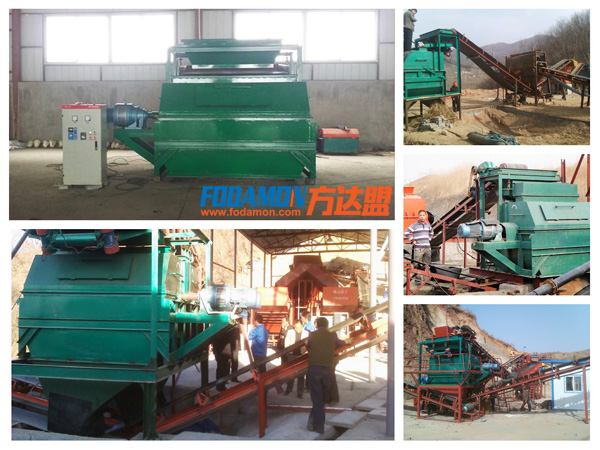Dry magnetic separator is suitable for magnetic separation of magnetite, pyrrhotite, roasted ore, ilmenite and other materials with particle size less than 30 mm. It is also used for iron removal of coal, non-metallic ore, building materials and other materials.

- Thickness of feeding layer.
It has a great relationship with the particle size of the material to be processed and the content of the magnetic particles. Generally, the feed layer is thicker than the fine particles. When the coarse-grain grade ore is treated, the thickness of the ore layer is about 1.5 times of the maximum particle. In the treatment, the grain size can reach about 4 times of the largest particle, and for the fine grain material, the thickness can reach 10 particles. When the content of magnetic materials in the raw materials is not high, the ore layer should be thinner. If it is too thick, the magnetic particles in the lowermost layer are subjected to the pressure of the upper layer material, and the magnetic force cannot be absorbed, resulting in a decrease in the recovery rate. When the content of magnetic particles is high, the ore layer can be thicker.
- Magnetic field strength and working gap.
It is closely related to the granularity, magnetic level and operation requirements of the treated materials. When the working gap is fixed, the magnetic field strength between the magnetic poles depends on the ampere turns of the coil. The turns can not be adjusted. The magnetic field strength can only be adjusted by changing the magnitude of the exciting current. When dealing with the selection operations such as Hongzun with strong magnetism, the weaker magnetic field should be used to deal with the materials with weak magnetism and the cleaning operations, and the field strength should be higher. When the current is constant, changing the size of the working gap can not only change the strength of the magnetic field, but also change the gradient of the magnetic field to reduce the sharp increase of the magnetic force in the gap. Generally, the size of the treated particles should be reduced as much as possible in order to increase the recovery rate. When selecting, it is better to increase the gap to increase the selectivity and improve the grade, but at the same time, it is necessary to increase the exciting current to ensure the required magnetic field strength.
- Feeding rate.
The rate of ore feeding is determined by the rate of vibration trough (or belt). Its speed determines the mechanical force on the time when the ore stops in the magnetic fear. The greater the speed, the shorter the stopping time of the ore particles in the magnetic field. The mechanical force on the ore particles is mainly gravity and inertial knife. Gravity is a constant, and the inertial force is proportional to the square of the velocity. The magnetic force of weak magnetic mineral particles in the magnetic field is less than that of gravity. Therefore, the rate is higher than a certain limit. As the inertia force increases, the magnetic force of adsorption will be insufficient, resulting in low acceptance rate. Therefore, the feeding rate of weak magnetic minerals should be lower than that of strong magnetic minerals when separating weak magnetic minerals. Similarly, in the process of concentrating, there are more monomer particles and stronger magnetism, and the rate of ore feeding can be increased. In the process of sweeping, there are more conjoints and weaker magnetism in the quality guess, so the rate of ore feeding should be lower in order to improve the acceptance rate. When dealing with fine particles, the frequency of vibration tank should be higher in order to facilitate the loosening of ore particles. Less; the opposite is true when dealing with coarse grains. Suitable operating conditions should be determined by the requirements of ore properties and separation quality. When dealing with a number of metal ores with penalties, the material should be linked to dry narrow-grade feeding, which is conducive to the progress of indicators. If wide-grade feeding is accepted, because the magnetic force of its huge and fine particles is quite different, it will also increase the difficulty of selecting separation conditions. The curriculum vitae prove that the more classifications the original sieve has, the better the indicators will be.
